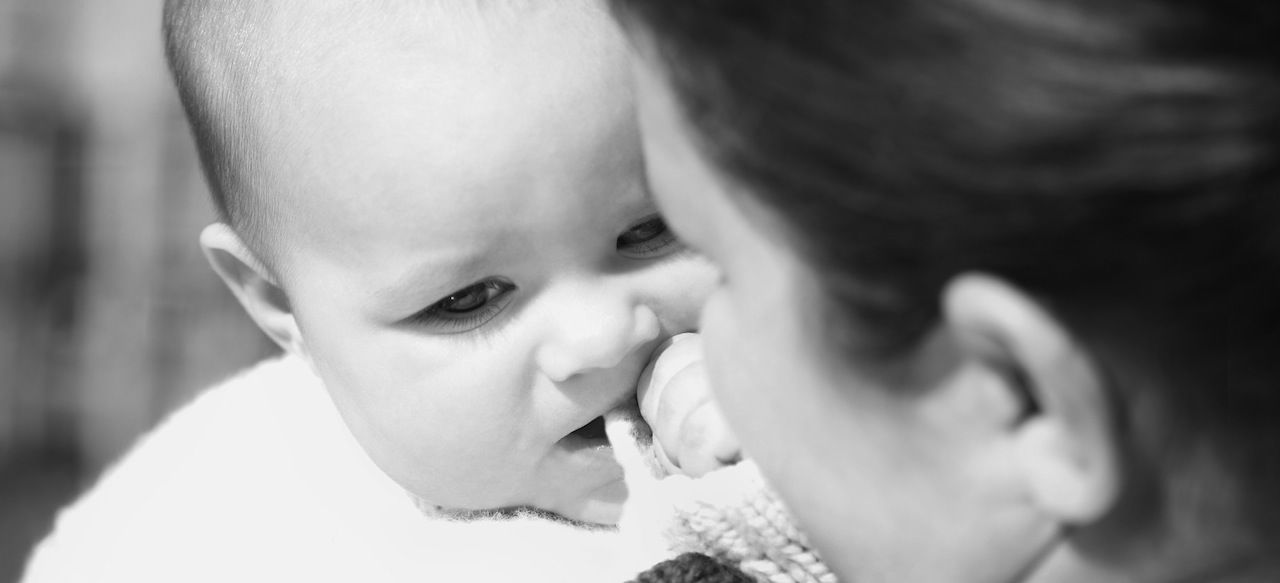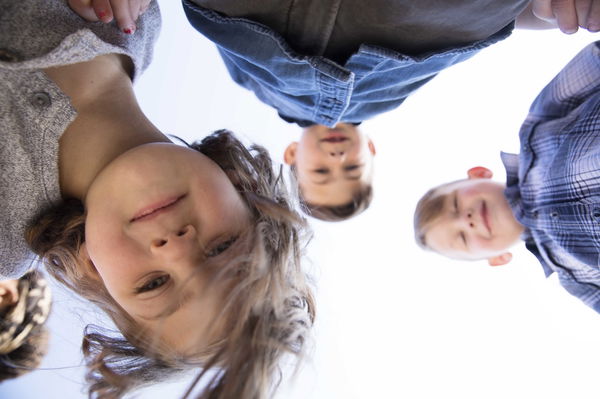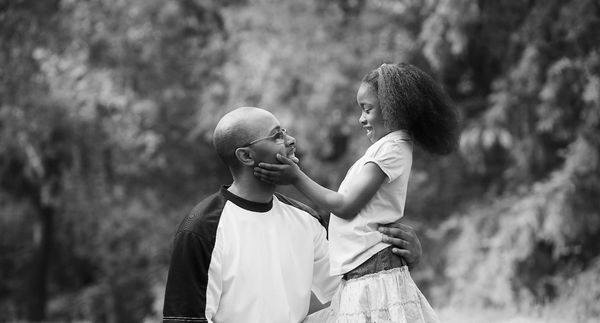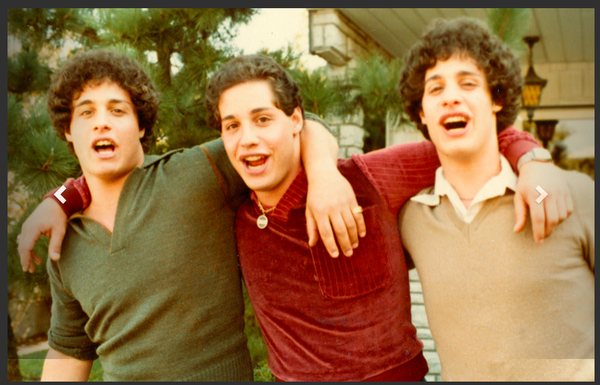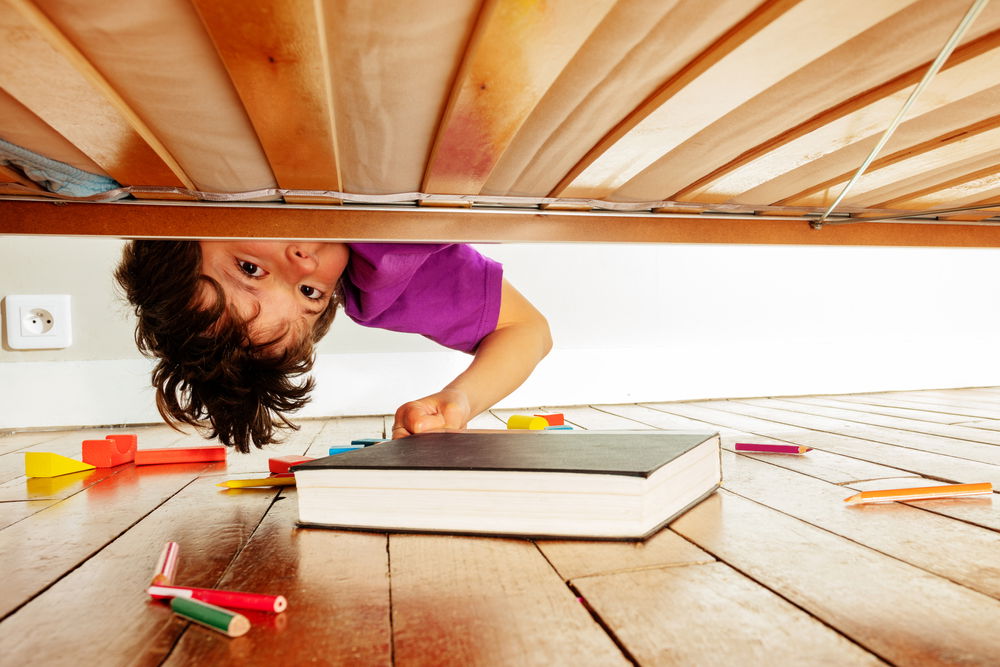Highlights
According to a new government report, children are far more likely to undergo adverse family experiences, like witnessing violence in their household or living with someone who has an alcohol or drug problem, if they are not living with both their biological parents.
Specifically, according to data collected for the 2011–2012 National Survey of Children’s Health and analyzed by the CDC's National Center for Health Statistics, children living with neither of their parents are 2.7 times as likely as those living with both biological parents, and more than twice as likely as children living with one biological parent, to have had at least one adverse experience such as those shown in the figure below.
Percentage of children aged 0–17 years with selected types of adverse family experiences, by number of biological parents living in the household: United States, 2011–2012
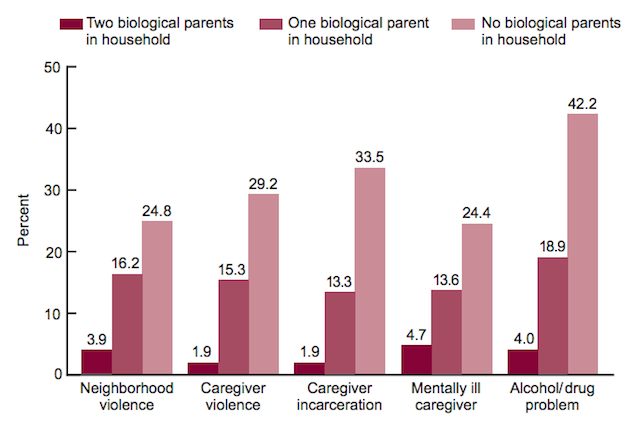
Source: CDC/NCHS, State and Local Area Integrated Telephone Survey, National Survey of Children’s Health, 2011–2012.
The survey asked caregivers about nine adverse experiences in all: "whether the child [selected for the survey] had experienced 1) divorce or separation, 2) death, or 3) incarceration of a parent or guardian; whether the child had ever lived with anyone who 4) was mentally ill or suicidal or severely depressed or 5) had an alcohol or drug problem; whether the child 6) ever witnessed any violence in the household, 7) was the victim of violence or witnessed violence in the neighborhood, or 8) ever suffered racial discrimination; and 9) whether the child’s [current] caregiver had often found it hard to get by on the family’s income." Such experiences are, obviously, hard on children, and they're associated with worse health outcomes in adulthood, as well as an elevated risk of drug abuse and suicide.
Differences between household types are even larger for children's likelihood of having multiple adverse experiences. Children living with one parent are fifteen times as likely to have had four or more adverse experiences as those living with two biological parents, and for children in nonparental care that number rises to thirty.
Percent distribution of number of different types of adverse family experiences for children aged 0–17 years, by number of biological parents living in the household: United States, 2011–2012
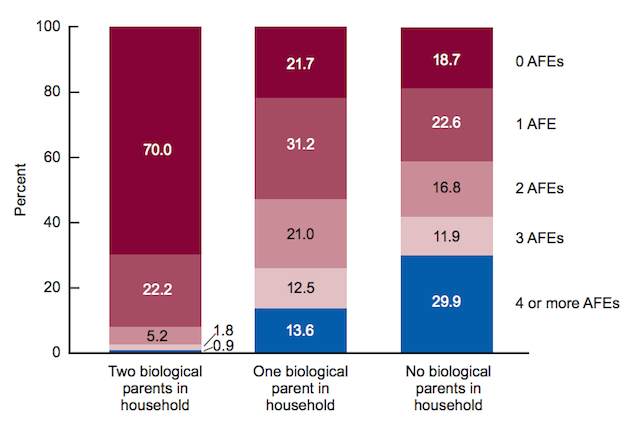
Source: CDC/NCHS, State and Local Area Integrated Telephone Survey, National Survey of Children’s Health, 2011–2012.
In all, 63.1 percent of children live with both biological parents, 22.1 percent live with one, and 3.1 percent live with neither parent (in foster care or with nonparental relatives). The remaining 11.7 percent of children live in households that include nonbiological parents (stepparents or adoptive parents); this group was omitted from the study.
Note that the researchers did not control for household income or other demographic factors, and that the reported adverse experiences, apart from financial deprivation, include those that occurred at any time in the child's life. That means, for instance, that the many adverse experiences of children in foster care may have preceded (and led to) their being placed in foster care, or that the violence or drug use of one biological parent could have led to the child living exclusively with the other biological parent. As the full report emphasizes, the survey is cross-sectional and cannot be used to make conclusions about cause and effect. Nevertheless, the figures are a striking illustration of how children in the care of both biological parents are most likely to escape adverse experiences.
